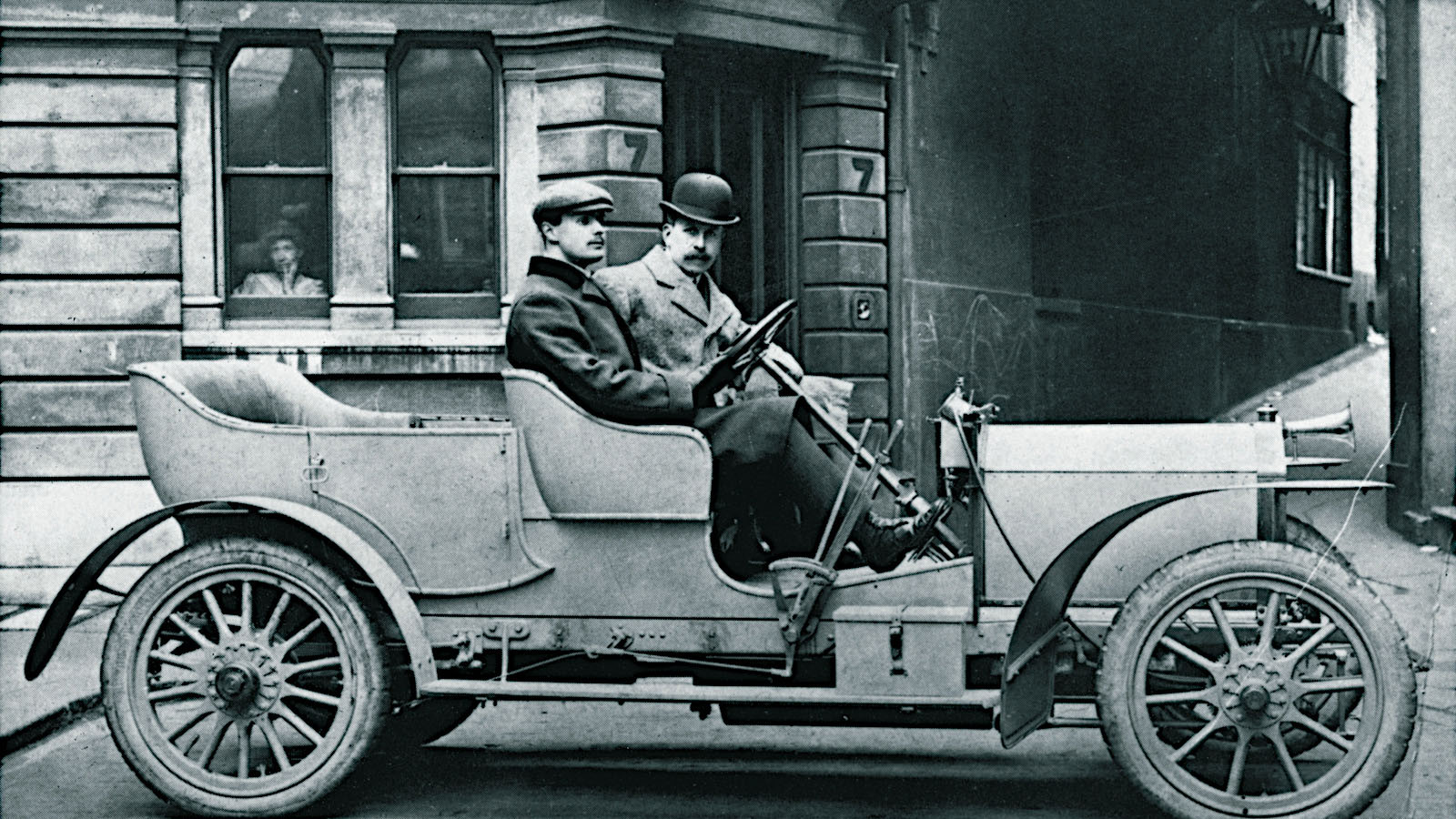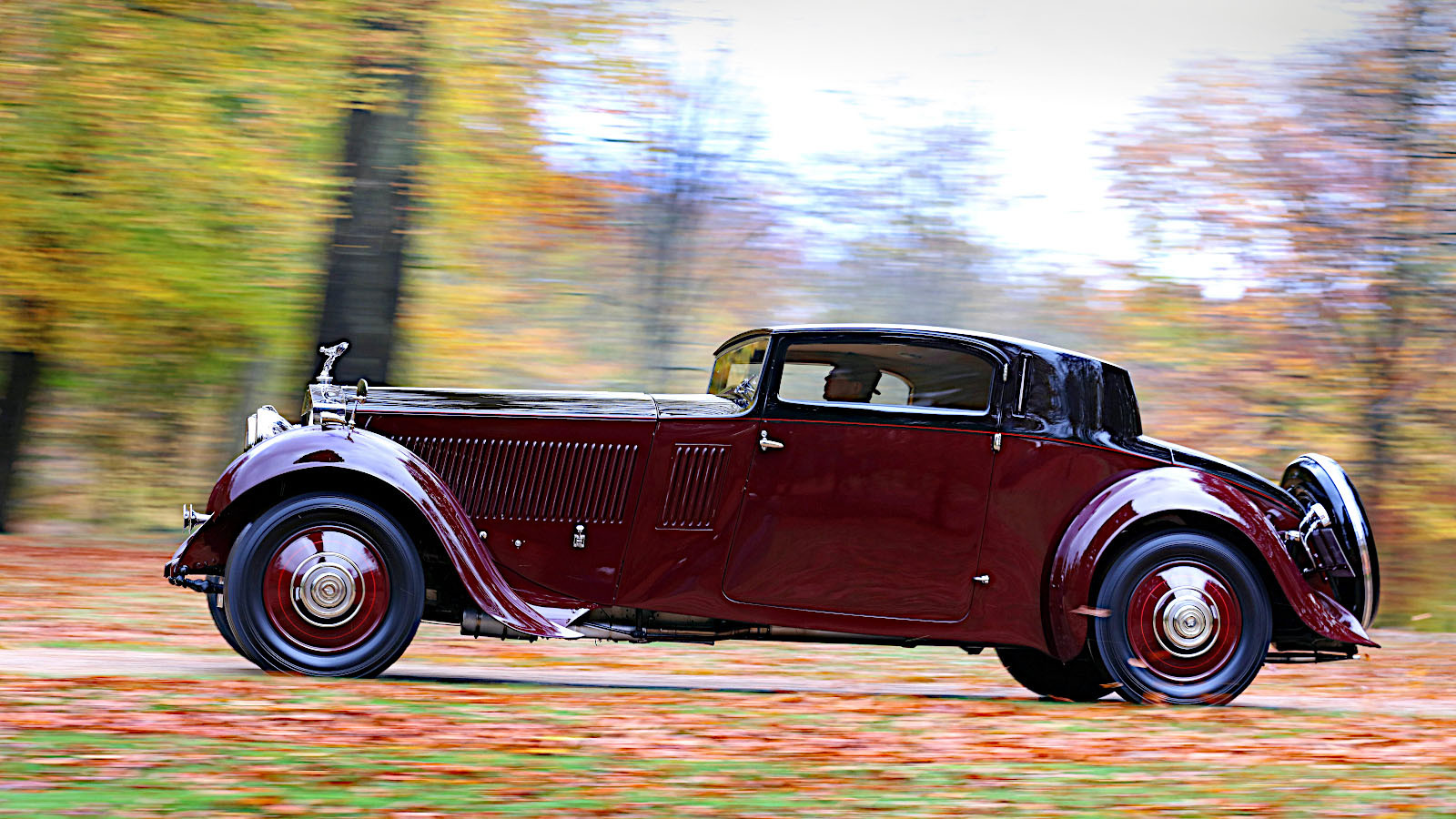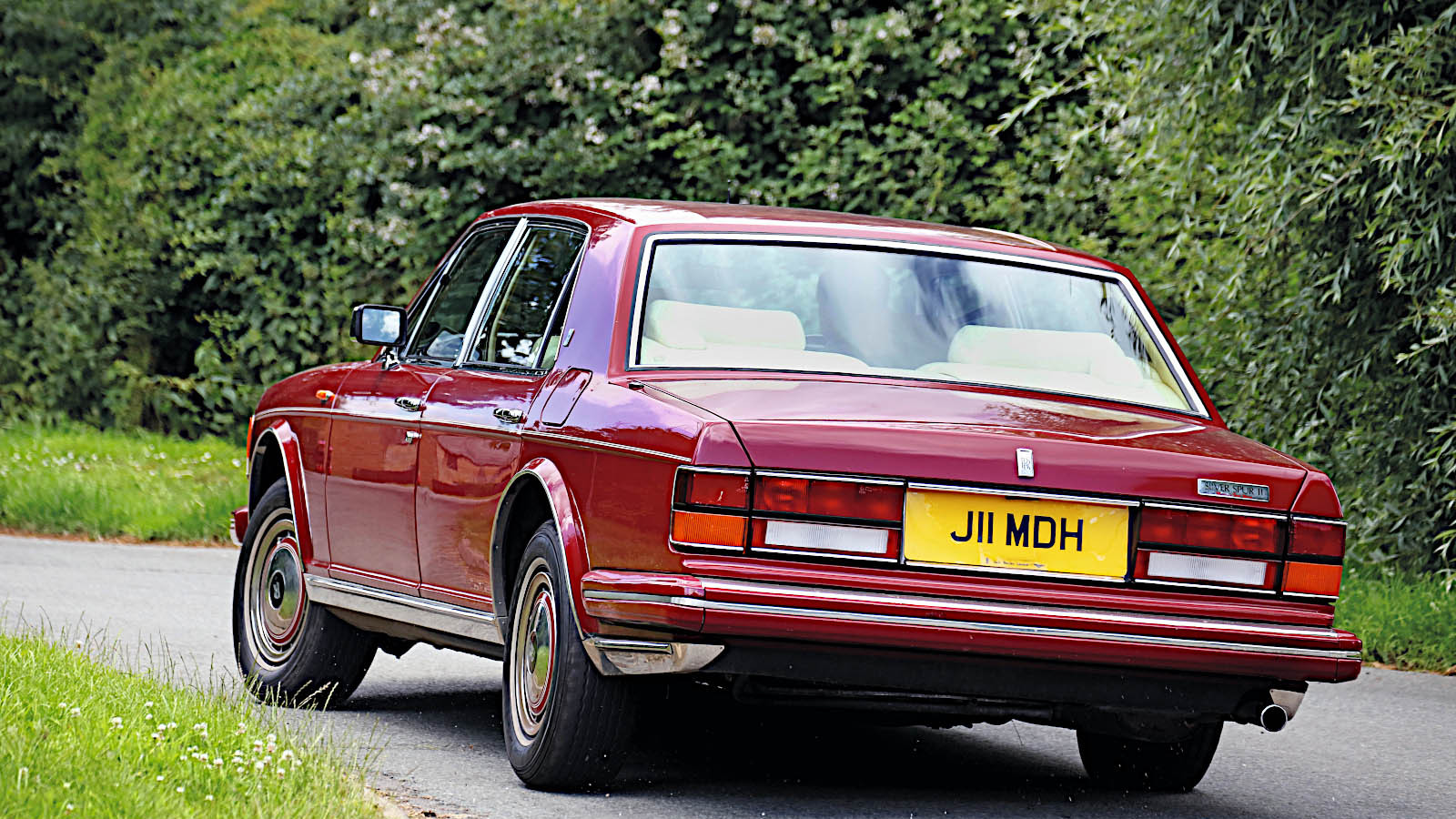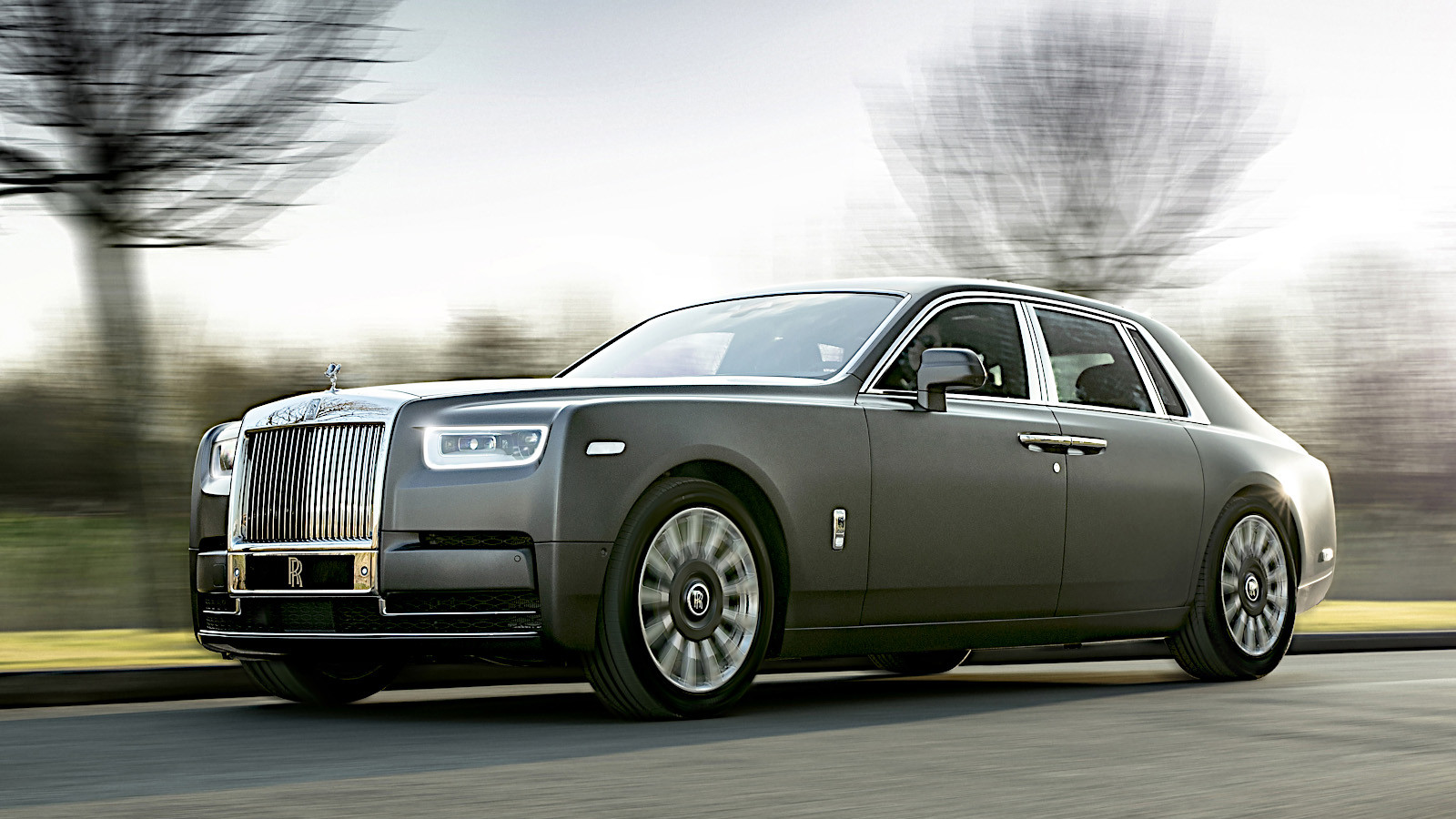-
 © James Mann/Classic & Sports Car
© James Mann/Classic & Sports Car -
 © Rolls-Royce
© Rolls-Royce -
 © Rolls-Royce
© Rolls-Royce -
 © Public domain
© Public domain -
 © Rolls-Royce
© Rolls-Royce -
 © Luc Lacey/Classic & Sports Car
© Luc Lacey/Classic & Sports Car -
 © Classic & Sports Car
© Classic & Sports Car -
 © Tony Baker/Classic & Sports Car
© Tony Baker/Classic & Sports Car -
 © James Mann/Classic & Sports Car
© James Mann/Classic & Sports Car -
 © Darin Schnabel/RM Sotheby’s
© Darin Schnabel/RM Sotheby’s -
 © Malcolm Griffiths/Classic & Sports Car
© Malcolm Griffiths/Classic & Sports Car -
 © Rolls-Royce
© Rolls-Royce -
 © Rolls-Royce
© Rolls-Royce -
 © James Mann/Classic & Sports Car
© James Mann/Classic & Sports Car -
 © Rolls-Royce
© Rolls-Royce -
 © Luc Lacey/Classic & Sports Car
© Luc Lacey/Classic & Sports Car -
 © Rolls-Royce
© Rolls-Royce -
 © Classic & Sports Car
© Classic & Sports Car -
 © Luc Lacey/Classic & Sports Car
© Luc Lacey/Classic & Sports Car -
 © Simon Clay/RM Auctions
© Simon Clay/RM Auctions -
 © Tony Baker/Classic & Sports Car
© Tony Baker/Classic & Sports Car -
 © RM Sotheby’s
© RM Sotheby’s -
 © James Mann/Classic & Sports Car
© James Mann/Classic & Sports Car -
 © RM Auctions
© RM Auctions -
 © Tim Scott/RM Sotheby’s
© Tim Scott/RM Sotheby’s -
 © Rolls-Royce
© Rolls-Royce -
 © Rolls-Royce
© Rolls-Royce -
 © Rolls-Royce
© Rolls-Royce -
 © Rolls-Royce
© Rolls-Royce -
 © Rolls-Royce
© Rolls-Royce
-
Still rolling strong
In May 1904, the Honorable Charles Rolls traveled to Manchester, UK, to meet engineer Henry Royce for the first time.
Within months, that meeting had led to an arrangement whereby Rolls, through his car dealership in London, would sell anything Royce built.
Rolls-Royce, as the marque quickly became known, was soon being hailed as one of the world’s greatest luxury brands, as it still is today, 120 years later.
Here we look at the development of Rolls-Royce by means of a chronological run-through of its models, with a particular focus on those sold in the 20th century.
-
Rolls-Royce 10hp
Royce completed his first car, which he called the 10hp, in April 1904.
It was strongly influenced by, but also an improvement of, a Decauville he had bought in 1902, the same year Rolls established his car dealership.
In Manchester, Rolls was so impressed by Royce’s car that he suggested the collaboration which has now been running for nearly a century and a quarter.
Royce developed it further (while continuing to believe for a little longer that an engine with just two cylinders was appropriate), and the Rolls-Royce 10hp made its debut later in 1904.
-
Rolls-Royce 15hp, 20hp and 25hp
In only its first full year of business, Rolls-Royce already had as many as four separate models in its line-up.
The 10hp was quickly joined by the 15hp, 20hp (pictured) and 30hp, which had engines with three, four and six cylinders respectively.
Each cylinder measured approximately one liter, so the 30hp’s total capacity was 6 liters, the largest yet for a Rolls-Royce.
None of these cars were available for long, owing to the single-model policy which would shortly be introduced.
-
Rolls-Royce V8
In a quest for greater refinement, Royce developed one of the world’s first V8 engines for a car manufactured very briefly in 1905.
The cylinders were the smallest of any used by Rolls-Royce up to this point, so their total capacity was only around 3.5 liters.
The combustion process within each one was therefore also small, and there were so many during a single rotation of the crankshaft that the operation of the engine must have been very smooth by the standards of the time.
There is no way to experience this today, however, since only three V8s are believed to have been built, and none survive.
-
Rolls-Royce Silver Ghost
Silver Ghost was originally the name only of Rolls-Royce’s most famous car, registered AX201, but has now been applied generally to the 40/50hp model.
This was introduced in 1906 and rather than the existing V8 engine, it was instead powered by a straight-six measuring 7 liters at first and later 7.6 liters.
An example with the registration number R 1075 (pictured) won the 1911 London to Edinburgh trial, covering the 799-mile round trip while locked in top gear, and then did the same thing again 110 years later.
For several years the Silver Ghost was the only model Rolls-Royce built, and it remained in production for nearly two decades, being discontinued in 1925.
-
Rolls-Royce Twenty
In October 1922, Rolls-Royce revealed a new model – officially known as the 20hp but generally referred to as the Twenty – which would serve as the junior model to the well-established Silver Ghost.
The correspondence pages of Autocar magazine fairly sizzled for months with contrasting opinions about the Twenty’s reduced specification, which included pushrod-operated overhead valves but no overhead camshaft, a lack of front brakes and three rather than four forward gears.
There was, however, a reason for this, namely that Rolls-Royce knew that many customers who could have afforded a Silver Ghost before the First World War would not be in the same financial position after it.
The engine (another straight-six, but this time with a capacity of just 3.1 liters) proved to be a misstep, since it couldn’t cope with the weight of the heavy coachbuilt bodies the cars’ owners were in the habit of commissioning.
-
Rolls-Royce Phantom
Known retrospectively as Phantom I, this car (pictured with a Brewster roadster body) was the 1925 replacement for the Silver Ghost, and was another model technically described as a 40/50hp.
Yet again, the engine was a straight-six (a layout Rolls-Royce persevered with for many years), but in this case it measured 7.7 liters, exceeding everything that had gone before.
Like its predecessor, the Phantom was built both in Derby, UK, where Rolls-Royce had moved in 1908, and in Springfield, Massachusetts.
The company’s model development was now much faster than it had been a decade earlier, so, unlike the Silver Ghost, the first Phantom was on the market for only a few years.
-
Rolls-Royce 20/25
Aware that the Twenty’s engine had insufficient power, Rolls-Royce increased its capacity from 3.1 to 3.7 liters for the 20/25 which replaced the earlier car in 1929.
It remained in production until 1936, three years after the death of Henry Royce (Charles Rolls had become the first British person killed in an air crash back in 1910) and five after the company saved Bentley from bankruptcy.
The first Bentley launched after this, and the first of what became known as the Derby Bentleys, used the same engine, though this wasn’t fully apparent from the fact that it was called the 3½ Litre (to use the British spelling).
-
Rolls-Royce Phantom II
After just four years, the original Phantom was replaced by a second-generation version in 1929.
The third and last of the 40/50hp models had a substantially different chassis, and while the engine was mostly the 7.7-liter straight-six used in the earlier car, it now had a crossflow cylinder head.
The Phantom II was generally a luxury car, but Rolls-Royce built some examples of a short-wheelbase Continental version (pictured here with Freestone and Webb bodywork), to which the word ‘sporty’ might cautiously be applied.
-
Rolls-Royce 25/30
With the 20/25, you’ll remember, Rolls-Royce addressed the issue of insufficient power in the Twenty by raising the engine capacity from 3.1 to 3.7 liters.
However, as the company admits today, ‘even this did not fully solve the problem’, so for the 25/30 of 1935 (pictured with Sedanca de Ville bodywork by Gurney Nutting) the capacity was increased still further to 4.25 liters.
The same change was made to the Bentley 3½ Litre, which was from now on named, more accurately this time, the 4¼ Litre (again, using the British spellings).
-
Rolls-Royce Phantom III
The last large Rolls-Royce launched before the Second World War had one outstanding feature which the company would not return to for more than 50 years after its introduction in 1936.
This was its engine, which was slightly smaller than that of the two earlier Phantoms at 7.3 liters, but had twice as many cylinders.
In fact, as we’ll see, it was one of only two V12s ever fitted to a production Rolls-Royce car during the 20th century.
The Phantom III pictured here, which has unique bodywork by HJ Mulliner, was used by several high-ranking army officers during the Second World War, and was later bought by Field Marshal Bernard Montgomery after his retirement.
-
Rolls-Royce Wraith
Having already used Ghost and Phantom (and, though not yet for a production model, Spectre), Rolls-Royce chose Wraith for the successor to the 25/30.
It still had the 4.25-liter engine, but there were several upgrades, and this was the first Rolls-Royce to be supplied without an ignition lever on the steering wheel, since there was no longer any need for one.
Production began in 1938 and was prematurely ended, like that of the Phantom III, by the outbreak of the Second World War, after only 491 examples had been built.
-
Rolls-Royce Silver Wraith
The Silver Wraith marked a new beginning for Rolls-Royce in two ways.
It was the first model introduced after the Second World War, and the first built at a factory in Crewe previously used for the manufacture of Merlin aero engines.
The car (pictured here with Landaulette bodywork by Park Ward) had a straight-six engine, which started out at 4.3 liters in 1946 and had grown to 4.9 liters when production ended in 1958.
The Bentley MkVI was a close relative, and had the advantage of being available with a body – Rolls-Royce owners still had to go to the trouble of commissioning one from an independent coachbuilder.
-
Rolls-Royce Silver Dawn
The no-body policy finally came to an end in 1949 with the introduction of the Silver Dawn, which could nevertheless still be purchased as a rolling chassis if that’s what the customer wanted.
The standard body, supplied by Pressed Steel and identical to that of the Bentley MkVI, was altered in 1953, but while this led Bentley to rename its version Type R, Rolls-Royce continued with the Silver Dawn name.
Shorter than the Silver Wraith, the Silver Dawn had the same engine, which was in this case enlarged from 4.3 to 4.6 liters, though production ended in 1955 before its capacity was increased further to 4.9 liters.
-
Rolls-Royce Phantom IV
The curious history of the Phantom IV began when the then Prince Philip, later Duke of Edinburgh, was given the opportunity to drive a prototype called the Scalded Cat.
He liked it so much that he asked if he could have something similar built for himself, to which Rolls-Royce of course agreed.
At this stage, what became the Phantom IV was only ever intended to be a one-off, but the company subsequently built a further 17.
Most of these were commissioned by heads of state (including the Aga Khan, whose example is pictured here), though one, strangely, was built as a pick-up truck, and only ever used within Rolls-Royce.
-
Rolls-Royce Silver Cloud
The Silver Cloud replaced the Silver Dawn in 1955, and was produced in three generations for 11 years.
Structurally, it remained more or less the same, but for the Silver Cloud II of 1959 the original 4.9-liter straight-six engine made way in 1959 for a 6.25-liter version of a new V8, which would be used in Rolls-Royces and Bentleys for more than 60 years.
The V8 was retained in the Silver Cloud III (pictured), which looked very different from, and considerably more modern than, the earlier versions, thanks to its quad-headlight arrangement.
-
Rolls-Royce Phantom V
Compared with the very rare Phantom IV, the Phantom V was practically a mass-produced model, manufactured all the way from 1959 to 1968.
Related to the Silver Cloud II, but substantially larger than even the long-wheelbase version of that car, it had the V8 engine right from the start.
The Silver Cloud III’s quad headlights were added in 1963.
Famous owners of the Phantom V included Imelda Marcos, the last Shah of Iran and John Lennon, who commissioned a multi-color repaint for his.
-
Rolls-Royce Silver Shadow
Introduced in late 1965, the Silver Shadow was the first Rolls-Royce with unibody construction, and therefore the first which could not be made to look substantially different through the artistry of a coachbuilder.
The by now customary V8 engine was the only one ever fitted to the car, and in 1970 its capacity was raised to 6.75 liters.
Seven years after that, Rolls-Royce introduced the Silver Shadow II, which was basically the same car with changes to the steering and suspension, along with some minor exterior upgrades.
The Bentley T Series was identical to the Silver Shadow in all but the smallest details, and became the T2 when the same alterations were made in 1977.
-
Rolls-Royce Phantom VI
Despite the arrival of the Silver Shadow, Rolls-Royce wasn’t quite done yet with body-on-chassis construction.
It was retained for the sixth-generation Phantom, which appeared in 1968 and was built in small numbers (latterly very small indeed) until the last was completed in 1993.
The Phantom line came to a temporary halt at this point, though a seventh Phantom would arrive early in the 21st century.
-
Rolls-Royce Corniche I to IV
Rolls-Royce has produced five models called Corniche, a name which in French can mean ‘coastal road’, including but not limited to any which might be found on the shores of the Mediterranean.
The first four (we’ll come to the fifth later) were all two-door versions of the Silver Shadow, always available as a convertible and sometimes as a coupe.
Production began several years after that of the Silver Shadow in 1971, but ran until 1995, a decade and a half after the four-door sedan had been discontinued.
-
Rolls-Royce Camargue
For the Camargue, Rolls-Royce once again chose a French name, this one taken from the river delta and nature reserve on the Mediterranean coast.
The car was a two-door coupe, essentially a replacement for that version of the Corniche, and was designed not within Rolls-Royce but by Paolo Martin of Pininfarina, whose work in this case caused some controversy.
Be that as it may, the Camargue survived from 1975 to 1986, receiving several updates during that time.
-
Rolls-Royce Silver Spirit
The long-running Silver Shadow was replaced in 1980 by the Silver Spirit, which lasted even longer.
Rectangular headlights made the new model look very different, while in a nod to safety the Spirit of Ecstasy mascot, registered as Rolls-Royce’s intellectual property way back in February 1911, was now retractable.
The 6.75-liter V8 engine was used throughout, but the specification gradually changed in other ways, with adaptive suspension arriving in 1989 and a four-speed automatic gearbox provided by General Motors replacing an older three-speed unit from the same source in 1991.
The Silver Spirit was canceled in 1997, five years after the equivalent Bentley Mulsanne which, unlike the Rolls-Royce version, was available with a turbocharger soon after it was launched.
-
Rolls-Royce Silver Spur
The Silver Spur was in almost every respect the same car as the Silver Spirit, except that it was four inches longer.
It also remained on the market for a further three years, completing two decades just before it was withdrawn in 2000.
The Flying Spur was a turbocharged version with sports suspension and a reputed power output of c360HP, of which only 134 examples were built in 1994.
Nearly as rare was the Silver Dawn special edition, total production from 1995 to 1998 being just 237 units.
-
Rolls-Royce Silver Seraph
Perhaps the most significant thing about the Silver Seraph was that it was only the second Rolls-Royce ever fitted with a V12 engine.
The 5.4-liter unit was supplied by BMW, which also used it in the contemporary 7 Series.
The Silver Seraph was introduced in 1998 and dropped only four years later, when BMW transitioned from being a provider of engines to owner of the brand.
Bentley’s equivalent, called the Arnage, was never fitted with the V12, but was produced by that marque’s new owner Volkswagen for much longer, until 2010.
-
Rolls-Royce Corniche V
The fifth, and so far final, Corniche was the only Rolls-Royce introduced during the short period when it was part of the Volkswagen Group.
Like its four predecessors, it was a two-door convertible, but by the time of its introduction in 2000 it could hardly have been based on the Silver Shadow, a car launched 35 years previously.
It was far more modern than that, but it was also notably short-lived, being discontinued at around the same time as the Silver Seraph when BMW took over the marque.
The last Corniche V was also the last Rolls-Royce ever built at the Crewe factory before production was moved to its present home at Goodwood.
-
Rolls-Royce Phantom VII and VIII
Rolls-Royce entered the present era in 2003 by launching the seventh Phantom model a decade after completing the final example of the sixth.
The car established a new styling trend, and was powered by an also-new V12 engine (only the third in Rolls-Royce history) designed by BMW but retaining the 6.75-liter capacity of the old V8.
An eighth Phantom (pictured) was introduced in 2017, still with a 6.75-liter V12 but now with the added feature of twin turbochargers.
Recently updated to Series II specification, the Phantom VIII is the flagship of the Rolls-Royce range today.
-
Rolls-Royce Ghost, Wraith and Dawn
The Ghost, previewed in the form of the 200EX concept at the 2009 Geneva show, is smaller than the Phantom, and therefore bears the same relationship to that car as the Twenty did to the Silver Ghost a century ago.
It has only ever been offered as a four-door sedan, but it gave rise to the two-door Wraith coupe and Dawn convertible introduced in 2013 and 2015 respectively, both of which were discontinued in 2023.
The Ghost entered a second generation (pictured) in 2020, now based on a new platform grandly named Architecture of Luxury, which was first used for the Phantom VIII.
-
Rolls-Royce Cullinan
In 2018, what would once have been unthinkable finally happened: Rolls-Royce added an SUV to its range.
The Cullinan was named after the world’s largest-known, gem-quality rough diamond, which was in turn named after the owner of the South African mine where it was discovered in January 1905, just a few weeks after the 10hp went on sale.
Based on the Architecture of Luxury platform, the Cullinan quickly became the most popular Rolls-Royce globally.
As such, it was a major contributor to the company achieving 6021 sales in 2022, beating the record of 5586 set the previous year.
-
Rolls-Royce Spectre
Having built cars with anything from two to 12 cylinders for well over a century, Rolls-Royce brought out one with no cylinders at all in 2023.
The Spectre is the company’s first electric vehicle, powered by two motors with a combined output of 585HP (slightly more than the 571HP normally produced by the twin-turbo V12), and currently its second most expensive, ahead of the Ghost and Cullinan but behind the Phantom.
It almost certainly marks the beginning of a new chapter for the marque, whose then CEO Torsten Müller-Ötvös spoke in 2022 of the Spectre being “a symbolic shift for Rolls-Royce as it progresses towards a bright, bold, all-electric future”.
-
Rolls-Royce Coachbuild
Despite the recent arrivals of first an SUV and then an electric vehicle, Rolls-Royce has in one sense returned to the classic era.
The switch to unibody construction obliterated the opportunity for customers to buy a rolling chassis and commission a coachbuilder to create a special body, but it’s now possible, if you have sufficient means, to create what the company describes as ‘a unique collaboration between client and artisan’ – in other words, have Rolls-Royce itself build the body of your dreams.
The Coachbuild models to date include the one-off Sweptail, and a few examples of the Boat Tail and the Droptail.
The most recent at the time of writing, announced in February 2024, is the Arcadia Droptail (pictured), whose clock face alone is said to have taken five months to assemble.
We hope you enjoyed this gallery. Please click the ‘Follow’ button above for more super stories from Classic & Sports Car.
